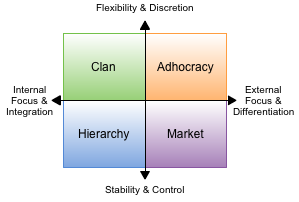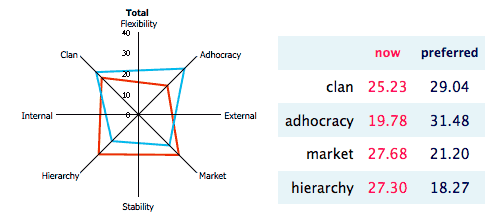CEOs and executives typically spend much of their leadership time at the head of a successful ship. But when it becomes necessary to adapt to change, they have a hard time steering that ship when the market winds shift and they need to change course. Do they need to add some innovation into their business? Is it the business model or the core processes that have to change? And do they also need to change their culture?
How do you know your culture needs to change? Has your business stalled?
Let me share a story.
During recent work on behalf of a Fortune 500 company which I will call “Client X,” my firm, Simon Associates Management Consultants (SAMC), was asked to help this highly successful business assess and perhaps change its corporate culture. The company had dominated its market over the decades, doing things well but in essentially the same way—the classic “this is the way we do it here.” From a cultural perspective, it was highly focused on being a competitive market leader and ran its business by the numbers…every day’s numbers.
Possessing a strong, market-driven culture, the company was now facing a troubling shift in consumer market tastes and buying habits. This changing customer was a powerful force, demanding new reactions and different methods from this company. It was time to step back and really think about “the way they did things.”
We, and they, recognized that the time had come to adapt their core values, beliefs and behaviors—their culture—to the changes taking place in their markets. Preferably, they wanted to start the process before they were “on the brink” and had to change.
Additionally, and almost right on cue, new managers from Generation Y were rising in the ranks and proposing new, innovative ways of doing things. A big collision was coming.
Often, the market demands that you innovate to stay relevant.
To adapt to new generations, new tastes and new business environments requires both a change in business models and a corporate culture shift. They really are not separate. What you do, how you do it, and why it is important are intimately connected, and together, they make up a company’s culture. And what exactly is culture? The essence of what we do as humans as we work together and get things done. It’s a clear set of values and symbols that literally gives meaning to a business and its employees’ daily lives.
For Client X, the changes that were anticipated had to be thoughtfully planned out, along with a process that was essential to make the changes become “the new ways we do things here.”
Corporate culture is certainly the hot topic today.
In a September, 2014 Forbes article, “9 Leadership Steps to Change Corporate Culture,” Micah Solomon outlines steps that emphasize planning and personnel. He recognizes that changing a corporate culture is not something that happens in a handful of meetings or just because a few people want it to. Changing corporate culture takes a commitment and sustained effort.
Similarly, the cover story in the April 2016 issue of Harvard Business Review, “Culture is not the Culprit,” the case studies reinforce the same theme: corporate culture change is part of changing the business model, not just telling people they have to change their values and behaviors.
The underlying question, however, is “from what” do we want to change the culture “to”?
Corporate Culture Change: The OCAI Assessment
When Client X called me, they had already decided that changing their culture was a priority, and they were ready to get down to business.
We started the process by having their management team take the Organizational Culture Assessment Instrument (www.ocai-online.com if you would like to take it yourself).
The OCAI is a powerful tool for assessing the current and preferred organizational culture. Well researched and highly validated, this methodology and tool were developed by Dr. Robert E. Quinn and Dr. Kim S. Cameron, professors at the University of Michigan, to help organizations get a baseline reading of a company’ culture today and what it needs to be in the future.
How Does The OCAI Work?
The OCAI is a remarkably simple way to capture the core values, beliefs, leadership styles and behaviors that people within a company embrace today and might wish to change in the future.
According to Quinn and Cameron, there are four types of corporate cultures that dominate companies. When they statistically analyzed 39 indicators of organizational effectiveness, they identified two polarities that reveal key opposing differences. In this framework, organizations are constantly choosing between:
Internal focus and integration – or – External focus and differentiation
Stability and control – or – Flexibility and discretion
The polarities look like this:
Based on employees’ decisions and tendencies, OCAI categorizes four organizational culture types. There is, of course, a full breakdown of each type, but here I’ll offer a summary of each:
- Clan culture: This kind of workplace feels like a family. There is a strong sense of loyalty and tradition, along with an emphasis on teamwork, participation and consensus.
- Adhocracy culture: This environment emphasizes creativity and risk-taking. Innovation is prized, and the long-term goals are built around growth. Individual initiative and freedom are encouraged and rewarded.
- Market culture: This type of workplace focuses on getting things done and is led by hard-driving leaders who emphasize market penetration, reputation building, and profitability. The leadership style is built around competition, both internally and in the market.
- Hierarchy culture: This structure is highly formalized and structured, where procedures and protocols win over creativity and innovation. The goals are built around stability and organization. The management focus is on control and efficiency.
Analyzing Client X
When each of Client X’s team did the OCAI, here is what was revealed (below is an anonymous chart to illustrate the results of the OCAI process):
NOW: The red areas show how employees believe their culture is today—collaborative and clannish, as well as market-driven and hierarchical. This is a nice balance. What is missing is the innovation and empowerment that an adhocracy offers.
PREFERRED: The blue lines reveal where the employees would like the company culture to be in the future. Clearly, the team would like to see it become more innovative and encourage empowerment, decision-making and idea-generation. This doesn’t mean that they want everyone doing their own thing—that would be chaotic. But it does mean that they collectively see a need to shift the focus toward encouraging respect for risk-taking and innovation, even as processes and controls remain in place.They also wanted less control and directing (hierarchy).
What about your company’s culture?
The OCAI Assessment is a powerful starting point for getting a team on the same page regarding where they are and where they want to go, as well as starting the kind of conversations that enable realistic, lasting culture change. Try the OCAI yourself! And let me know what it reveals about your company’s culture today and how it needs to shift for the future.
To learn more about how corporate anthropology can help your business change, adapt and thrive in these changing times, read our white paper.
Hope to talk soon about how we can help you change your culture.
Another great resource for you is my new book, “On the Brink: A Fresh Lens to Take Your Business to New Heights,” where I talk extensively about corporate anthropology, innovation and culture change. Order your copy from Amazon today!
Andi Simon, President
Simon Associates Management Consultants






